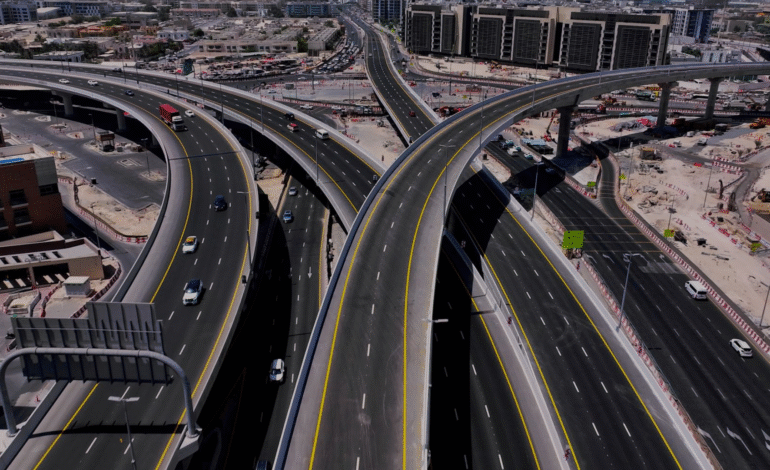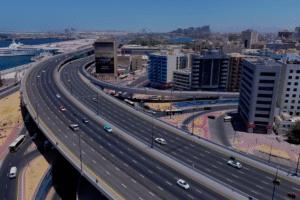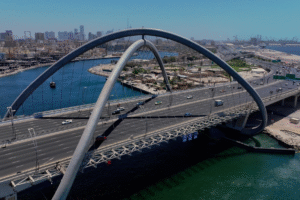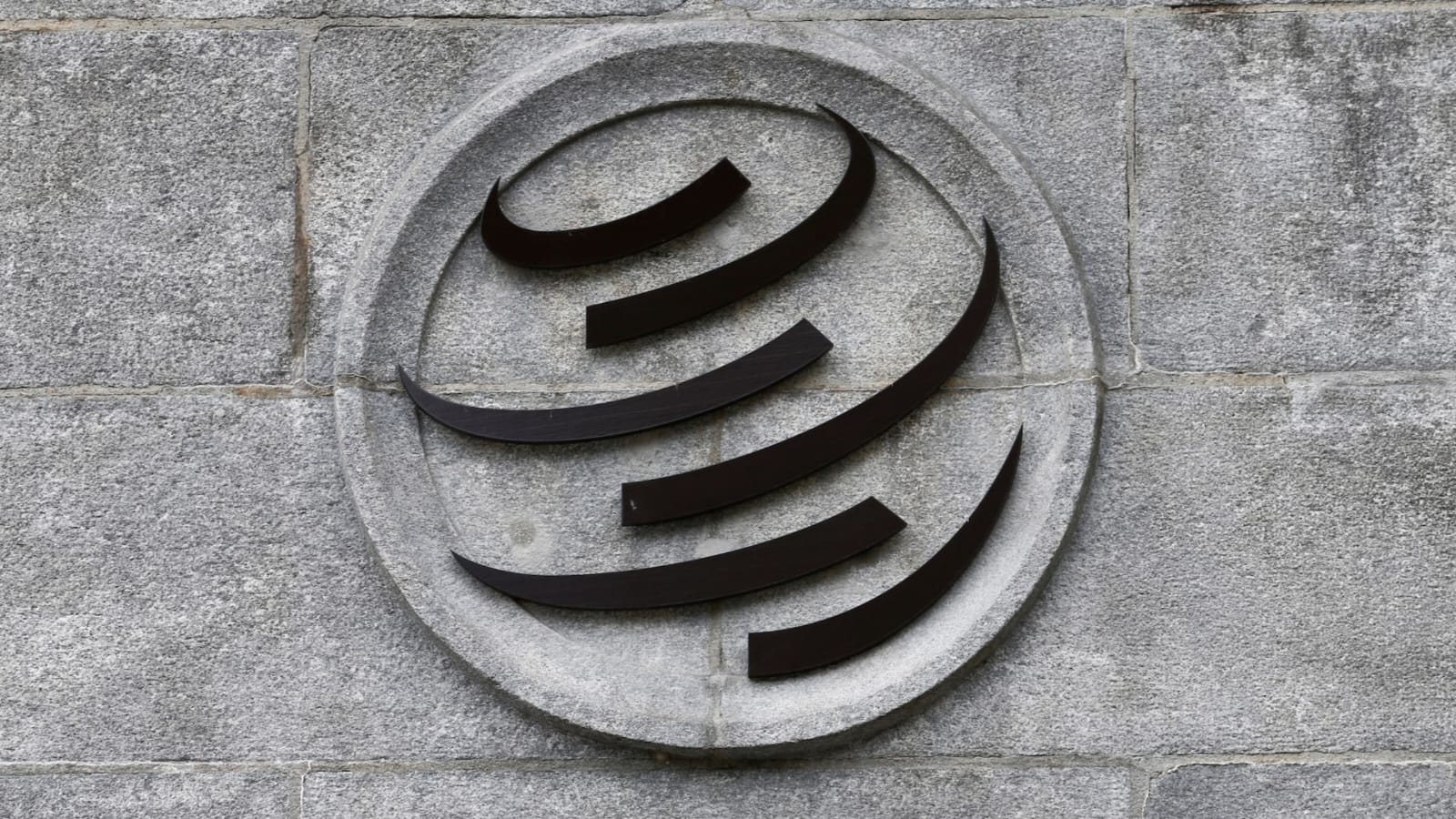Dubai Completes Final Bridge of Al Shindagha Corridor Project

Dubai’s Transport Vision Realized
Dubai has marked a transformative milestone in its transportation infrastructure with the opening of the final bridge in the Al Shindagha Corridor Development Project. Located at the intersection of Sheikh Rashid Road and Al Mina Street in Bur Dubai, this newly inaugurated bridge signifies the completion of a vast network designed to facilitate smoother traffic flows and reduce journey times across the city’s western gateway.
With this strategic link, the Roads and Transport Authority (RTA) has finalized one of Dubai’s most ambitious infrastructure projects. Backed by visionary leadership and state-of-the-art engineering, the Al Shindagha Corridor forms a continuous route connecting Al Garhoud Bridge to Port Rashid and the Waterfront Market, providing a major relief for commuters and commercial traffic alike.
Historical Background: Why the Al Shindagha Corridor Was Needed
The origins of the Al Shindagha Corridor Development Project lie in Dubai’s strategic master plans from the early 2010s. As urban density increased in Bur Dubai, Deira, and surrounding neighborhoods, traffic congestion grew significantly along key junctions like Al Mina Street and the 2nd December Street intersection.
Recognizing the mounting challenges of urban mobility in these historic and commercially vital areas, city planners and engineers conceptualized the Al Shindagha Corridor as a long-term solution. The goal was to create seamless traffic movement while enhancing Dubai’s infrastructure resilience in one of the oldest parts of the city.
Leadership and Vision: Sheikh Mohammed and Sheikh Hamdan’s Oversight
The successful completion of the Al Shindagha Corridor Development Project stems from the strong leadership and strategic direction provided by Dubai’s rulers. His Highness Sheikh Mohammed bin Rashid Al Maktoum, UAE Vice President, Prime Minister, and Ruler of Dubai, launched the initiative as part of his broader vision to make Dubai a global leader in infrastructure.
Sheikh Hamdan bin Mohammed bin Rashid Al Maktoum, Crown Prince of Dubai and Chairman of the Executive Council, ensured meticulous oversight throughout the project’s multiple phases. According to Mattar Al Tayer, RTA’s Director-General and Chairman of the Board of Executive Directors, the project embodies the leadership’s commitment to integrated urban development and transport efficiency.

Project Timeline: Phased Development of a Mega-Corridor
The Al Shindagha Corridor spans over 13 kilometers and was constructed in several interconnected phases. Early segments focused on expanding Sheikh Rashid Road, upgrading Falcon Junction, and building the iconic Infinity Bridge—one of Dubai’s most recognized architectural landmarks.
Each phase was executed using high-efficiency construction methods, including prefabricated components and round-the-clock project scheduling to avoid daytime congestion. Advanced traffic modeling allowed RTA teams to manage flow during construction, minimizing disruption across critical business and residential areas.
The final bridge at the Sheikh Rashid Road and Al Mina Street intersection completes the corridor, linking it to major commercial zones like Port Rashid, Dubai Maritime City, and Deira.
Dramatic Impact: Travel Time Cut from 80 to 12 Minutes
Perhaps the most significant achievement of the Al Shindagha Corridor Project is the sharp reduction in travel time. Commutes along this major corridor, which once took up to 80 minutes, now require just 12 minutes. Routes from Jumeirah Street to Infinity Bridge now take only five minutes, while journeys from Infinity Bridge to Al Mina Street or Al Wasl Road near the 2nd December Street are equally short.
This efficiency not only benefits daily commuters but also enhances emergency response times, logistics coordination, and public transportation services.
Smart Infrastructure: Technology and Sustainability Integration
The Al Shindagha Corridor isn’t just about roads and bridges—it’s a smart infrastructure project designed for the future. The corridor features real-time traffic monitoring, adaptive traffic lights, and emergency vehicle access planning. These smart features are fully integrated with Dubai’s intelligent transport systems, supporting the city’s vision for becoming a leader in smart mobility.
Sustainability was also prioritized in the corridor’s development. Heat-resistant asphalt, energy-efficient lighting, and upgraded drainage systems were incorporated to align with the Dubai 2040 Urban Master Plan and UAE’s green growth agenda.
Supporting Dubai’s Economic Zones: Port Rashid and the Waterfront Market
The completed corridor offers substantial benefits to commercial traffic, particularly around Port Rashid and the bustling Waterfront Market. Improved access routes mean goods can be delivered more efficiently, logistics operators save time and costs, and passenger traffic from Dubai’s growing cruise tourism sector can move faster across the city.
The direct connection to these areas elevates Dubai’s competitiveness as a trade and tourism hub while reducing logistical friction for importers, exporters, and vendors.
Real Estate Boost: Urban Renewal in Bur Dubai
Infrastructure upgrades typically lead to real estate growth—and the Al Shindagha Corridor is no exception. With easier access and reduced congestion, neighborhoods such as Al Mina, Al Raffa, and Bur Dubai are experiencing renewed investor interest. Residential, commercial, and mixed-use developments are likely to increase in density, further revitalizing these older districts.
The corridor thus acts as a catalyst for urban renewal, enabling zoning flexibility and transforming once-cluttered streets into high-value real estate corridors.

Community Feedback: Residents and Drivers Welcome Relief
Local residents and daily commuters have expressed widespread satisfaction with the new road links. Stories abound of families saving time during school drop-offs, delivery drivers meeting tighter deadlines, and taxi operators handling more passengers per shift.
RTA has announced plans to monitor road performance via public feedback and traffic analytics, ensuring that future improvements continue to meet the evolving needs of the city.
Overcoming Challenges: Building Amid a Bustling City
The complexity of the Al Shindagha Corridor project cannot be overstated. Construction had to occur in dense urban areas, surrounded by heritage sites, residential buildings, and waterfront facilities. RTA overcame these challenges by using modular bridge components and conducting heavy work during off-peak hours.
Drone surveys, AI modeling, and high-precision geolocation tools helped engineers avoid damaging underground utilities and historic structures. These innovative construction methodologies ensured minimal disruption and maximum speed.
A Blueprint for the Future of Transport in Dubai
The Al Shindagha Corridor serves as a case study in modern urban infrastructure, showcasing Dubai’s ability to balance speed, complexity, and sustainability in a live urban setting. As the city continues to expand toward Expo City, the South Dubai corridor, and beyond, similar projects will take cues from this pioneering development.








1 Comment
[…] Badri, CEO of the Dubai Economic Development Corporation (DEDC), the economic development arm of DET, highlighted the significance of the new programme. He stated that the Dubai ICV […]
Comments are closed.